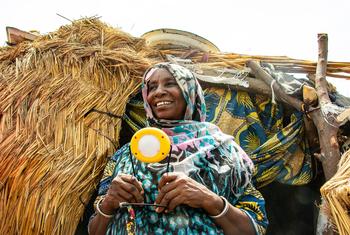Shining a light on sustainable power: how clean energy is helping to improve camps for displaced people
Hauwa, from Borno State in north-eastern Nigeria, fled her home village of Adamari with her husband and four children in March, when violence struck. Now, she is in the relative safety of a UN-run camp but, with little electricity available at night, lighting is scarce, and darkness can mean danger. However, thanks to a solar-energy initiative from the UN migration agency IOM, that is beginning to change.










